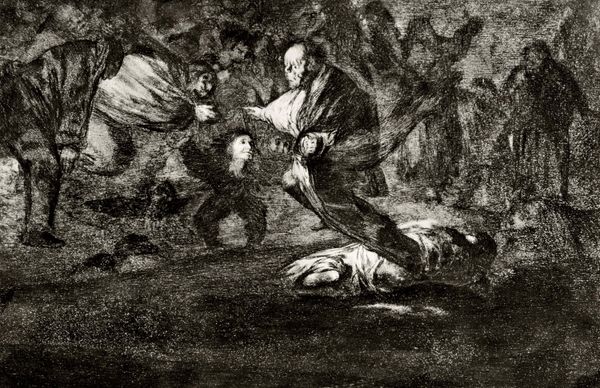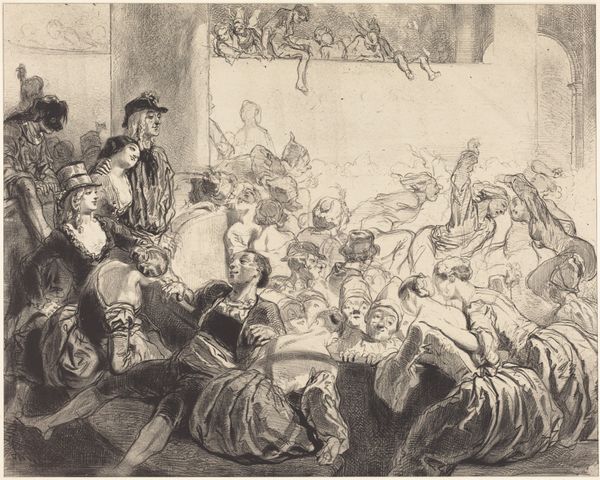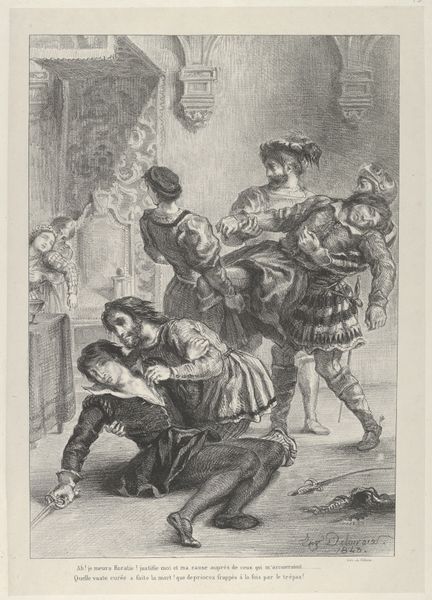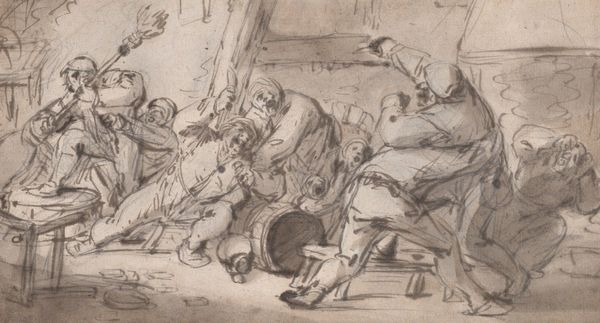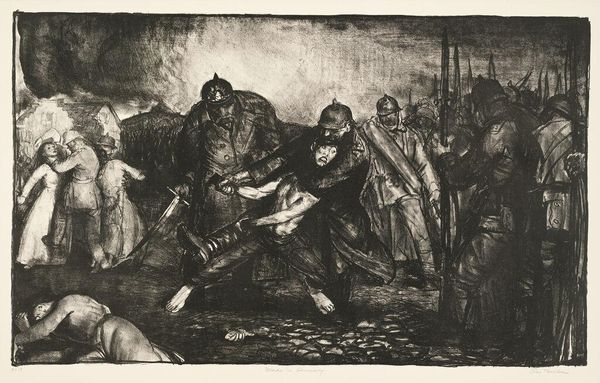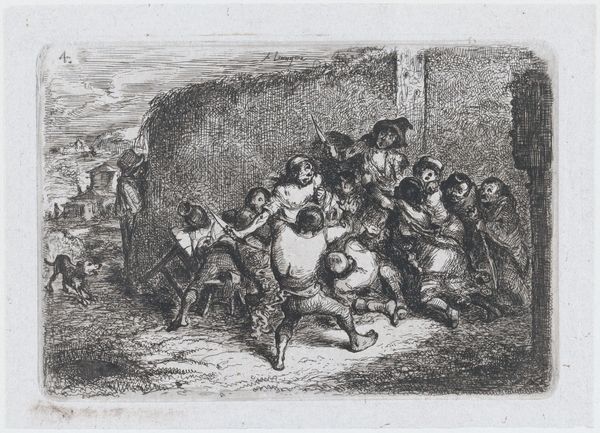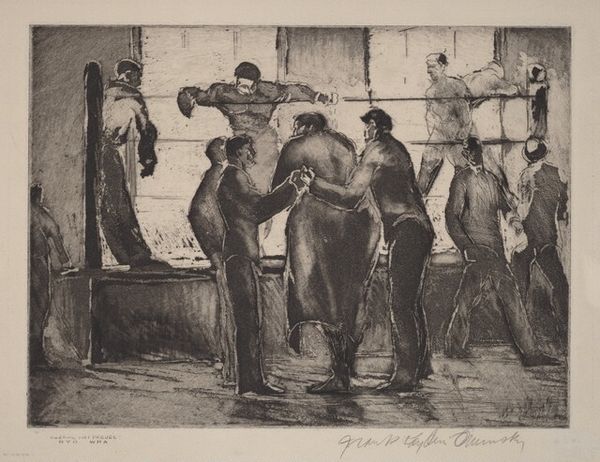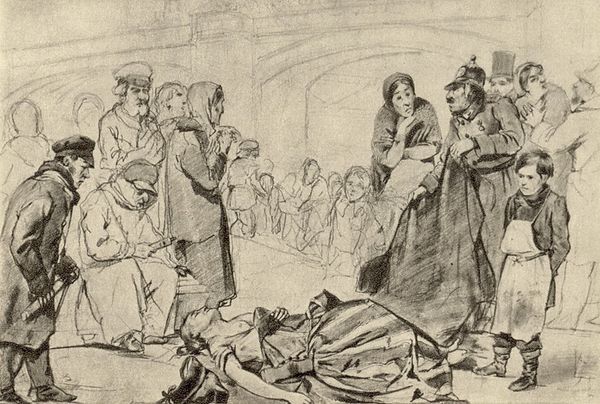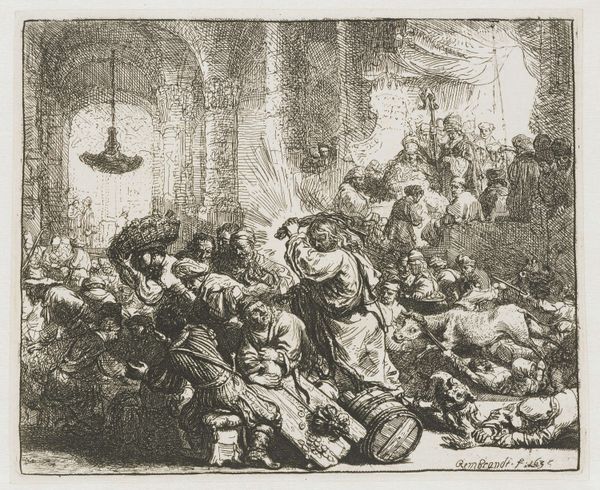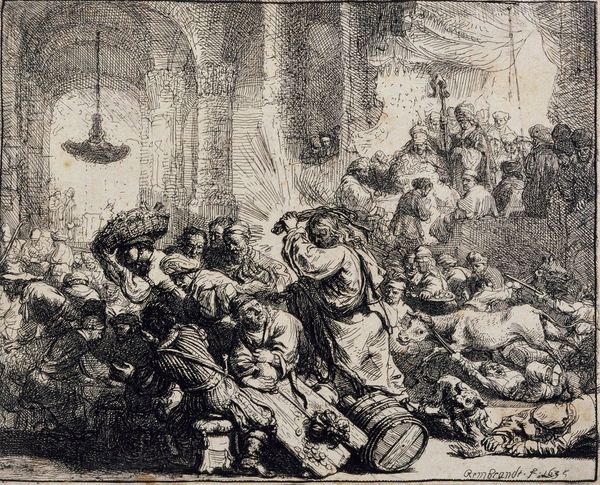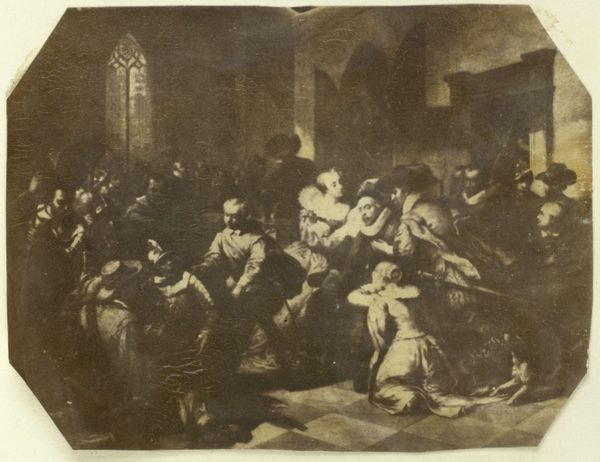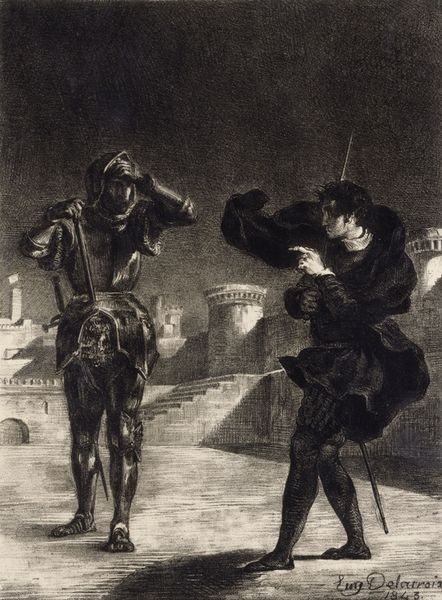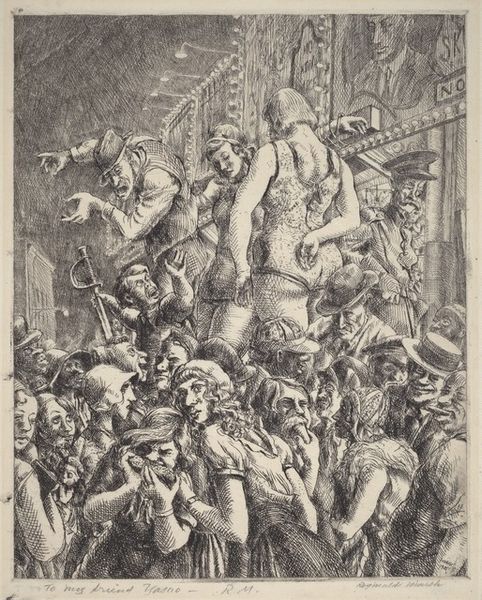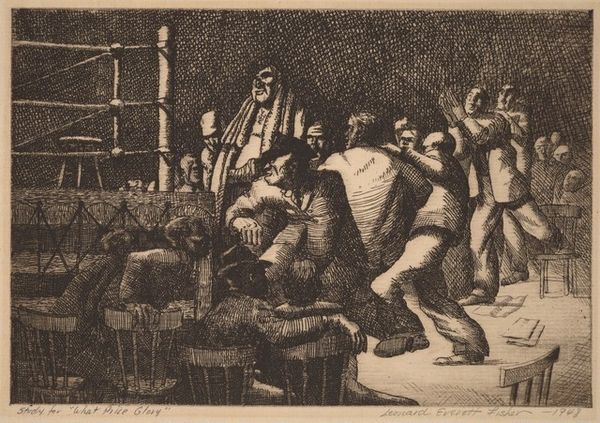
Dimensions: 19.7 × 35.2 cm (7 3/4 × 13 7/8 in.)
Copyright: Public Domain
Curator: Looking at this energetic painting from around 1860 to 1870, it's entitled "The Carousal (Scene from Faust?)". It currently resides here at the Art Institute of Chicago. Editor: My immediate reaction is that this artwork communicates pure, unbridled chaos. There’s something very dark about the rough rendering of this frenzied scene; I almost feel claustrophobic looking at this mob. Curator: Yes, the handling of the material itself, the visible brushstrokes, seems almost frantic, mirroring the debauchery depicted. One has to consider the context—the Romantic era's fascination with emotion and drama, but also with works on paper for a wider circulation. The relative simplicity of its materiality lent itself to the radical social and political changes brewing in Europe. Editor: It makes me wonder what "carousal" we’re really seeing here. The reference to Faust in the title positions this as perhaps not just a drunken scene, but an allegory for something darker: social upheaval, moral decay. How do we situate such chaotic scenes amidst, say, Victorian societal norms, particularly around constructions of gender and power? Are there women present and what are they doing? It’s important not just to talk about who it seems to portray but the underrepresented who have to navigate these environments as well. Curator: It’s intriguing that it’s executed in monochrome, a deliberate aesthetic choice to strip it of color, focusing instead on tonal contrasts and form. Consider the availability, standardization, and distribution of materials, especially black pigment, at the time. What does this say about artistic license versus material access? Editor: That starkness contributes significantly to the feeling of desperation, or even violence, wouldn’t you say? We see bodies contorted, faces almost demonic in the way they're portrayed. This could be speaking to the anxieties of a society grappling with rapid industrialization. It’s this context, rather than just artistic intention, that truly unlocks the layers of meaning here. Curator: Indeed, there's a tension between the overt subject matter and the possible reading of it given its production means, but ultimately, the viewer is asked to construct the final narrative themselves using the visual vocabulary provided through its materials. Editor: Precisely, engaging with its context ensures the picture stays potent. Curator: Thank you, that's an insightful note on which to close. Editor: My pleasure.
Comments
No comments
Be the first to comment and join the conversation on the ultimate creative platform.
